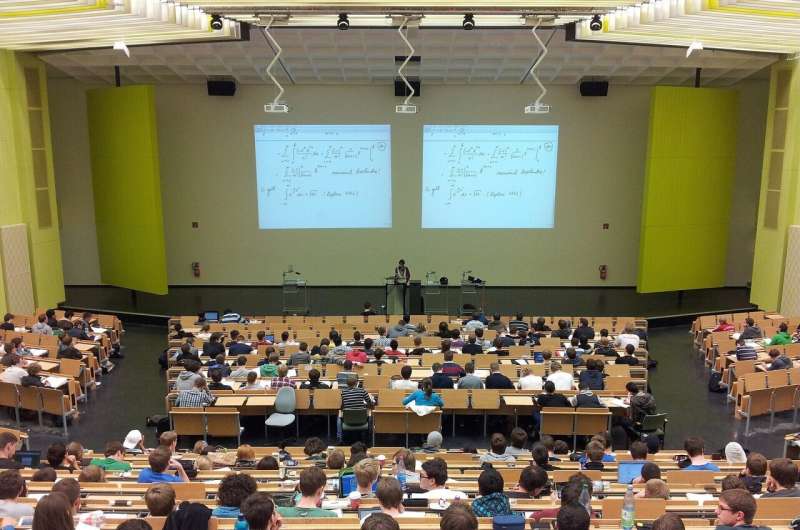Credit: Pixabay/CC0 Public Domain
A trio of researchers from the University of Cincinnati, the University of Colorado Boulder and Clemson University has found that college students giving evaluations of their professors in upper-level courses exhibited a gender bias based on the predominance of gender ratios of professors in a given department. In their paper published in Proceedings of the National Academy of Sciences, Oriana Aragón, Evava Pietri and Brian Powell describe analyzing more than 100,000 student evaluations at Clemson University.
Prior research has shown that students may allow biases such as gender, attractiveness or race to impact evaluations of their professors, which can, of course, skew results. In this new effort, the researchers found another factor that can skew results: gender bias based on the predominance of a given gender of professors in a given department.
For example, they found that students tend to give lower marks to male professors in a given department if most of the other professors in that department are female. They also found that this effect applied regardless of the gender predominance: If the department is predominantly male, then students tend to give lower marks to female professors. To reach these conclusions, the researchers obtained and analyzed more than 100,000 student evaluations for professors teaching 4,700 courses at Clemson University.
The researchers also conducted an experiment to learn more about such biases. Their experiment consisted of a website for a non-existent department at the university that displayed ratios of male to female professors teaching courses, which were rated by volunteer students. The fake website also allowed the volunteers to look at and rate professors who were described as teaching various courses. Pictures of the professors were also included to ensure the volunteers could identify their gender.
In looking at the data, the researchers found the same results—the students rated those professors lower who were in the gender minority in their department. They also found that when they moved the ratios toward parity, the students ceased rating one gender or the other higher or lower. The researchers did not attempt to find out why such biases exist, but suggest learning institutions could reduce such biases by moving toward gender parity regardless of the department in which professors are teaching.
More information: Oriana R. Aragón et al, Gender bias in teaching evaluations: the causal role of department gender composition, Proceedings of the National Academy of Sciences (2023). DOI: 10.1073/pnas.2118466120
Journal information: Proceedings of the National Academy of Sciences
© 2023 Science X Network























